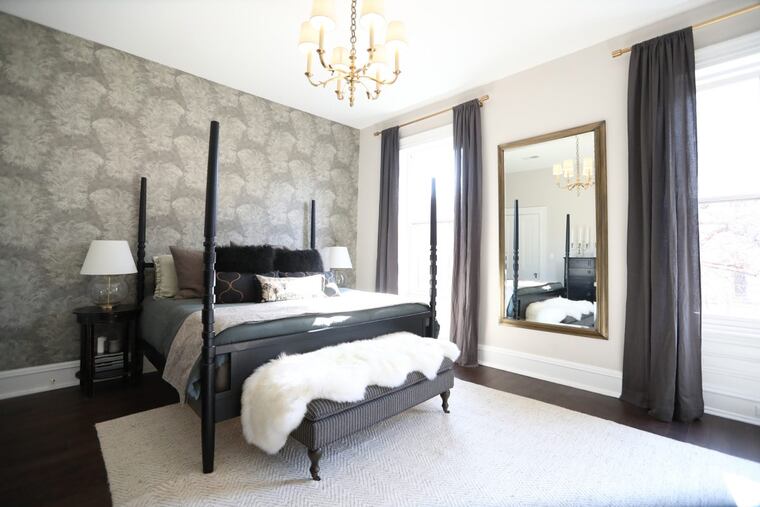Ask Jennifer Adams: How to choose room darkening window treatments
Do you work nights or have some bright lights outside the windows of your bedrooms? Jennifer shares her tips on how to choose room darkening window treatments to control light, privacy and add a designer touch to any window!

Q: I just bought my first house, and I've been enjoying making it into my own style. I work nights, so I painted my bedroom a dark blue to help make the day feel like nighttime. But my windows let light through, so it's harder for me to sleep. What kind of shades should I use?
A: Congratulations on your house. It's especially fun taking steps to make it your own, creating an environment that exactly suits your own needs.
Generally, I recommend light wall tones for bright and airy bedrooms, but for your circumstance, a darker tone is perfect. And navy blue is a classic, beautiful color that is having its own big moment now.
Even though you work a night shift, you're not alone in your need for room-darkening window treatments. Regardless of work schedule, a lot of people to control light through their windows. Street lights, busy traffic, and neighborhood security lights are all common reasons, plus, some people like to sleep in or nap. Room-darkening window shades are also helpful in nurseries and guest rooms.
To get a true darkening effect, assemble window treatments with at least one layer made with a blackout liner. That way, you can still have window treatments in whatever color you want. And you'll control the amount of light you get, from very dark to bright. Layering will also give you a variety of options to coordinate with your dark blue walls or to help create a mood.
Start with a blackout shade of some sort right next to the window. This layer could be a roller or pleated style, made with a special room-darkening liner and solid fabric. It doesn't need to be a dark color. The next layer could be a translucent or gauzy fabric or lightweight linen for a breezy sheer touch, or slatted blinds. Both filter daylight and adjust for privacy. Consider wood shutters or shades made of woven bamboo, reed, or similar material if you want a more natural look to tie in with the navy blue. Soft, warm, gray tones, such as that of natural linen, or the color of driftwood or weathered fence boards also look great with navy.
Have the outermost drape layer, the one farthest from the window itself, overlap the edges of the window to reduce the light coming in around the sides. This layer could be a beautiful fabric in a color or neutral tone, with the drape rod extending well past the edge of the window trim. The heavier the fabric, or denser the weave, the better it will block the light. You could add a blackout liner here, too. But heavy cloth, such as upholstery fabric, will need stronger hardware, and the finished product might not be easy to open or close. Shop around for premade drape panels or interesting fabrics for a custom or DIY design.
Good luck, and I'm sure you'll find something that will work.
Have a design dilemma? Jennifer Adams is an award-winning designer, author of the upcoming book "Love Coming Home" and TV personality. Send your questions to AskJennifer@JenniferAdams.com or for more design ideas, visit Jennifer's blog on her website at www.jenniferadams.com.